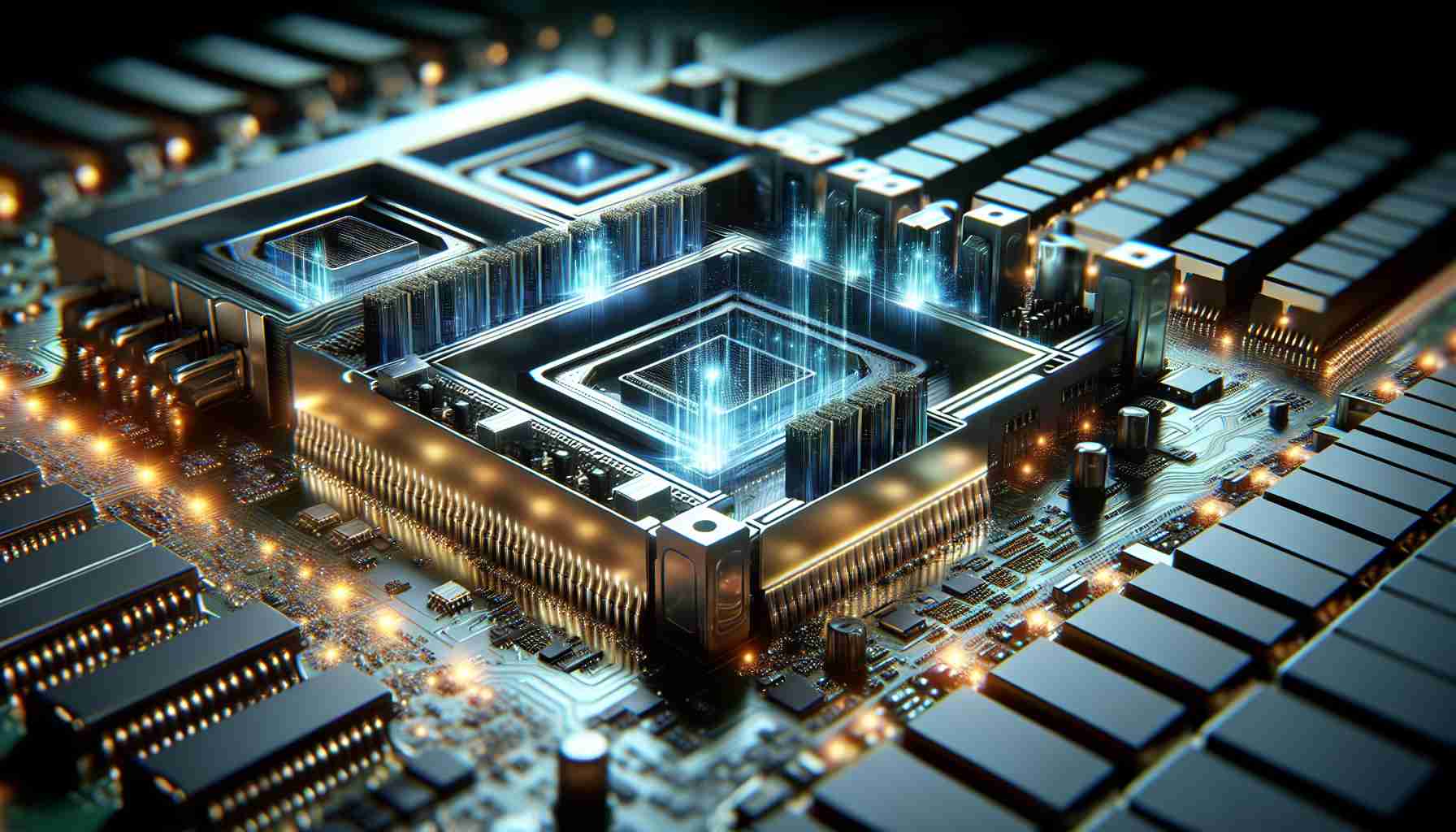Revolutionizing the AI Hardware Market, TensorWave is setting the stage for substantial changes in AI processing power by integrating AMD’s latest Instinct MI300X AI accelerators into its systems. These accelerators are touted as more efficient alternatives to NVIDIA’s established Hopper H100 AI GPU.
Expanding its hardware infrastructure, TensorWave is working towards acquiring a sizable fleet of 20,000 AMD Instinct MI300X AI accelerators by year’s end, spread across two of its data centers. Additionally, the company is on a trajectory to roll out cutting-edge liquid-cooled systems by 2025.
The CEO of TensorWave has expressed confidence in the superior specifications of AMD’s new AI GPU compared to the original NVIDIA H100, which is available with up to 80GB of HBM3 memory. This optimism is grounded in the impressively large memory capacity and high bandwidth of the MI300X, featuring 192GB of HBM3e memory with a data transfer rate climbing to 5.3TB per second.
Despite this edge in raw hardware capabilities, the debate surrounding the performance of AMD’s accelerators continues. Stakeholders are eager to see these new chips prove their worth as they stack up against NVIDIA’s dominant products. The CEO acknowledges this cautious curiosity, pointing out a widespread ‘wait-and-see’ approach among clients accustomed to NVIDIA’s performance track record.
The competition in AI acceleration hardware is heating up with AMD’s significant VRAM advantage on the Instinct MI300X. While NVIDIA’s H100 offers up to 80GB of memory, and its newer H200 provides 141GB of HBM3e, AMD still leads in memory capacity. However, NVIDIA plans to reclaim the lead with its B200 GPU, which promises an unprecedented 192GB of HBM3e memory and a colossal 8TB per second bandwidth.
Important Questions and Answers:
Why is memory capacity and bandwidth important for AI accelerators?
Memory capacity and bandwidth are crucial for AI accelerators because they directly influence the ability to process large datasets efficiently. Machine learning algorithms, especially those involved in deep learning, require substantial amounts of data to train effectively. Higher memory and faster data transfer rates allow for quicker processing times and the handling of complex models, leading to faster AI computations and more efficient learning.
What are some key challenges associated with adopting new AI accelerators like the AMD Instinct MI300X?
One of the key challenges is compatibility with existing software ecosystems and workflows. Given that NVIDIA’s CUDA platform has been widely adopted in the industry, switching to AMD’s accelerators might require significant changes in software and potential redevelopment of AI models to be compatible with AMD’s ROCm platform. Additionally, the actual performance and reliability of the new accelerators are unproven in real-world scenarios, creating hesitation among potential adopters.
What controversies might arise from the competition between AMD and NVIDIA?
Controversies may stem from claims about performance benchmarks, energy efficiency, and cost-effectiveness. Each company may present data in a light that is favorable to its products, leading to disputes over the accuracy and relevance of performance metrics. Price competition and market strategies, such as exclusive partnerships and proprietary technologies, could also lead to debates within the industry and among consumers.
Advantages and Disadvantages:
Advantages of AMD’s AI Accelerators:
– Potentially higher memory capacity, beneficial for handling extensive AI models.
– Increased bandwidth could mean faster data processing capabilities.
– Diversification of options in the AI hardware market encourages innovation and competitive pricing.
Disadvantages of AMD’s AI Accelerators:
– AMD’s software ecosystem may not be as mature as NVIDIA’s, possibly leading to adoption barriers.
– Uncertain real-world performance and stability as these new products are yet to be tested on a large scale.
– Potential difficulties in migrating from established NVIDIA solutions, which may involve costs and complexities.
For current information and resources related to AMD and its developments in AI acceleration, visit the official AMD homepage by following this link: AMD.
As for NVIDIA and their advancements in AI technology, including the NVIDIA H100 and upcoming GPUs, refer to NVIDIA’s main website through this link: NVIDIA.

